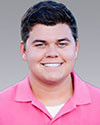By Anthony Armbruster, Colliers
Although converting former office buildings to multifamily properties is by no means a new practice, conversions have been on the rise in recent years due to the changing work environment and office landscape. While the COVID-19 pandemic has started to fade away in many peoples’ minds, several of the changes in the work environment during that time have not.
Many formerly in-office employees continue to work from home or have hybrid schedules post-pandemic. Additionally, tenants who are moving into new office spaces have shown a preference for smaller, more efficiently laid out, amenity-rich and suburban Class A office spaces.

These changing consumer preferences have resulted in higher vacancies and fewer new tenants for older downtown office buildings than before the pandemic. Consequently, many of these older buildings are being converted into residential spaces, exemplifying the trend.
An office building may be considered for a residential conversion when it is no longer economically feasible to continue running the building as such. However, not every office building at the end of its economically useful life is a suitable candidate for a residential conversion. Factors such as a building’s layout, location, age and cost of conversion play the most crucial role when determining if a reuse project is feasible.
Additionally, many historical office buildings in Cincinnati that may not be economically feasible for residential conversion on their own have received economic incentives through reuse programs, such as from the Ohio Brownfield Remediation Program. This program, spearheaded by Gov. Mike DeWine, aims to breathe new life into underutilized, abandoned or idled commercial buildings in the state of Ohio through redevelopment projects.
While the program is not limited to office-to-residential conversions, it has played a significant role in jumpstarting the conversion of some buildings.
One notable example of a Cincinnati building set to benefit from the program is Carew Tower at 441 Vine St. Completed in 1930, the tower stood as the tallest building in Cincinnati until the completion of Great American Tower in 2010. Hailed as a prime example of Art Deco architecture, the tower became an icon to the city. However, as the suburbs began to flourish and newer office buildings emerged, Carew Tower steadily lost tenants over the years. The biggest blow to the tower came in 2020, when the COVID-19 pandemic prompted many office employees to work from their homes.
However, a glimmer of hope for the future of the tower came in 2022, when Victrix Investments LLC, based out of New York City, purchased the tower for $18 million with the intention of converting the historic building into a residential building. Furthermore, Victrix has been granted $6.5 million from the Port of Greater Cincinnati through the Brownfield Program for the interior demolition, roof replacement and asbestos removal needed to help bring the building into the 21st century. The conversion is slated to commence in 2024.
While Carew Tower’s planned conversion stands out for its size, age and historical importance, many former office buildings in Cincinnati have already undergone a residential conversion. For instance, the apartment complex at 655 Eden Park Drive, originally built in 1921 as a manufacturing facility for the Baldwin Piano Co., has seen its fair share of adaptive reuse projects. After the Baldwin Piano Co. relocated to a new factory in 1961, the once-bustling factory sat vacant until 1987, when it was converted into an office building.
The thriving office market of the 1980s and 1990s helped sustain this historical building, but the waters muddied once again at the turn of the 21st century, as tenants began moving into modern office buildings. Once again forced to adapt to changing market conditions, the building was converted into an apartment complex in 2017, showcasing its successful evolution.
There are many buildings in Cincinnati that have and will have futures not unlike that of the Baldwin Building and Carew Tower. As more former office buildings in downtown Cincinnati undergo redevelopment and reuse projects, we may witness the rebirth of downtown Cincinnati as not just a workplace, but a vibrant residential, recreational and professional hub: Live, play and work.
Losing these office buildings to residential conversion may seem like a large blow to the Cincinnati office market right now, but these conversions may actually help the office market in the long run. As more Cincinnatians move downtown, the walkability of the remaining office buildings from the newly converted multifamily units could bring demand back to the central business district office market.
Alas, only time will tell how the future of downtown living and working in Cincinnati will look. Nevertheless, one thing is certain: Multifamily conversions will change the dynamics of Cincinnati and continue to pop up for the foreseeable future.
Anthony Armbruster is a research analyst with Colliers. This article originally appeared in the July 2023 issue of Heartland Real Estate Business magazine.


